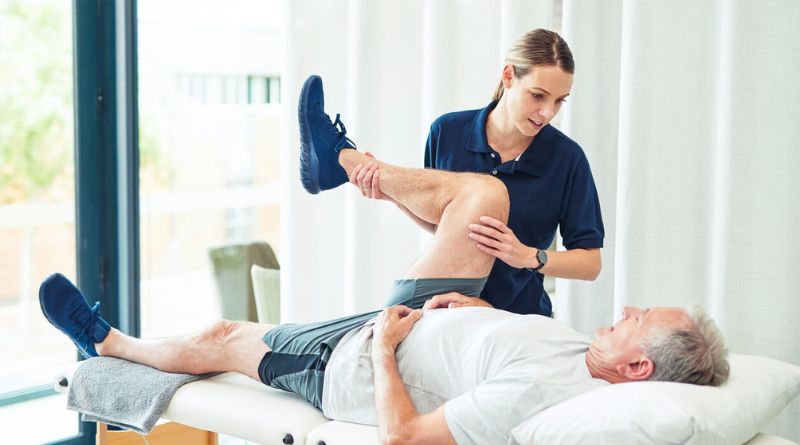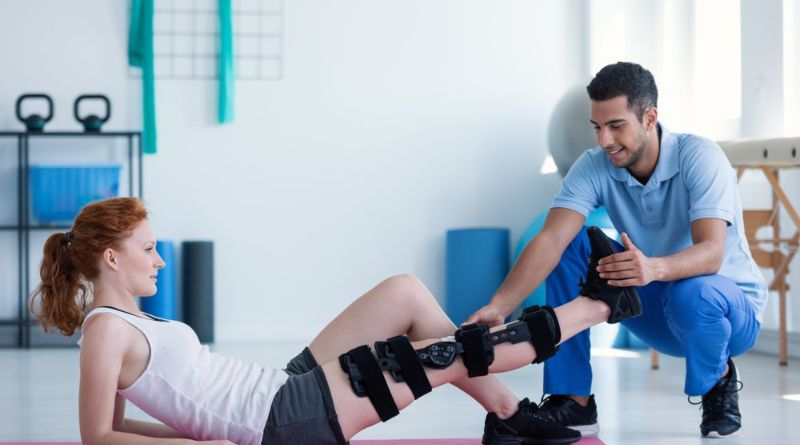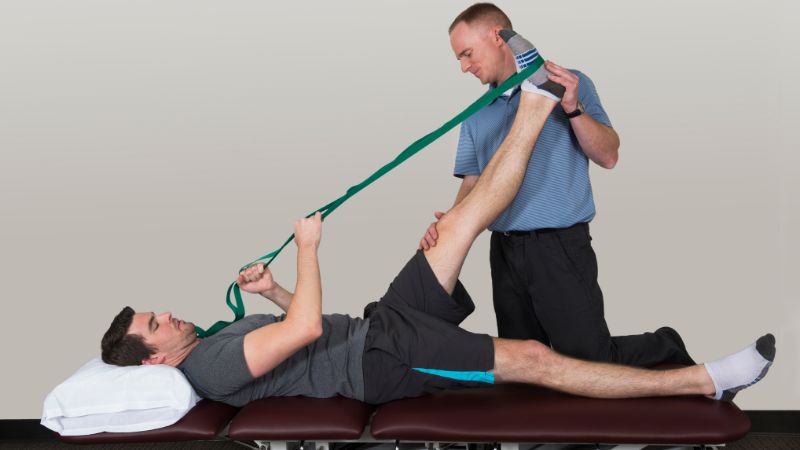Recovering from surgery can be a challenging journey, but with the right approach, it can lead to a faster and more effective healing process. Physical therapy plays a crucial role in post-surgery recovery, helping to restore mobility, reduce pain, and improve overall function. In this blog, we will explore 10 essential physical therapy techniques for post-surgery recovery that can make a significant difference in your rehabilitation process.
From manual therapy and therapeutic exercises to advanced modalities like ultrasound and electrical stimulation, these techniques are designed to cater to various needs and conditions. Whether you’re recovering from orthopedic surgery or a more complex procedure, incorporating these physical therapy techniques can help you regain your strength and return to your daily activities with greater confidence and ease.
10 Physical Therapy Techniques For Post-Surgery Recovery
Manual Therapy
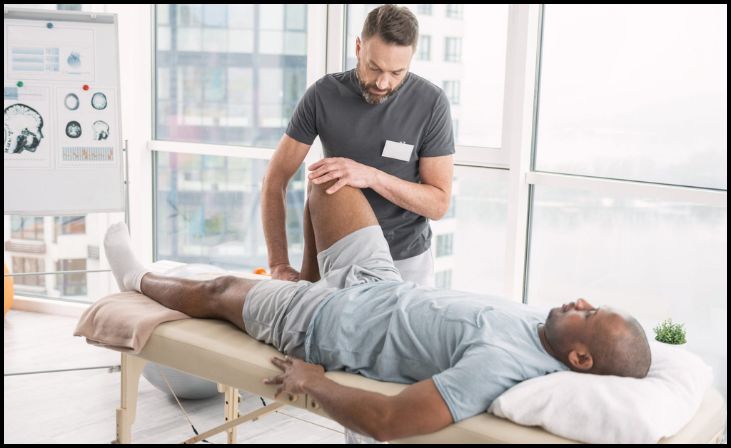
Manual therapy is a cornerstone of physical therapy, especially in the context of post-surgery recovery. This hands-on technique involves the physical therapist using their hands to manipulate muscles, joints, and soft tissues. The goal is to improve circulation, reduce pain, and increase range of motion. Manual therapy techniques can include massage, joint mobilization, and myofascial release.
These techniques are particularly effective in breaking down scar tissue and adhesions that may form after surgery, which can impede movement and cause pain. By improving blood flow to the affected area, manual therapy also helps in reducing inflammation and promoting faster healing. It’s crucial for patients to have a skilled therapist who understands the intricacies of manual therapy to avoid any potential harm and to ensure that the techniques are applied effectively for optimal recovery.
Also Read: 8 Best Physical Therapy For Jaw Pain And TMJ Disorders
Therapeutic Exercises
Therapeutic exercises are a fundamental aspect of post-surgery recovery, aimed at restoring strength, flexibility, and endurance. These exercises are specifically designed to target the muscles and joints affected by surgery. Depending on the type of surgery, the physical therapist will develop a customized exercise regimen that gradually increases in intensity. This approach helps to prevent muscle atrophy and joint stiffness, which are common issues during the recovery period.
Therapeutic exercises can include a range of activities such as stretching, strengthening exercises, and aerobic conditioning. By following a tailored exercise program, patients can enhance their functional abilities and expedite the return to daily activities. Consistency and correct form are key to the success of these exercises, making regular sessions with a therapist essential.
Electrical Stimulation
Electrical stimulation is a modern technique used in physical therapy to promote muscle contraction and pain relief. This method involves the use of electrical currents delivered through electrodes placed on the skin near the affected area. Electrical stimulation can help to reduce pain, improve blood circulation, and prevent muscle atrophy. It is particularly beneficial for patients who have undergone surgery on areas like the knees, shoulders, or lower back.
The therapy works by sending small electrical impulses to the muscles, causing them to contract and relax. This not only helps in maintaining muscle tone but also aids in the recovery of nerve function. The use of electrical stimulation should be supervised by a trained physical therapist to ensure safety and effectiveness.
Ultrasound Therapy
Ultrasound therapy is another advanced technique used in physical therapy to aid post-surgery recovery. This method utilizes high-frequency sound waves to generate heat within the body tissues. The heat produced helps in increasing blood flow, reducing pain, and relaxing tight muscles. Ultrasound therapy is particularly effective in treating deep tissue injuries and promoting the healing of scar tissue.
The therapist applies a gel to the skin and uses a handheld device to deliver the sound waves to the targeted area. This technique is often used for conditions such as tendonitis, ligament injuries, and joint inflammation. Regular ultrasound therapy sessions can significantly enhance the healing process and improve overall mobility and function.
Aquatic Therapy
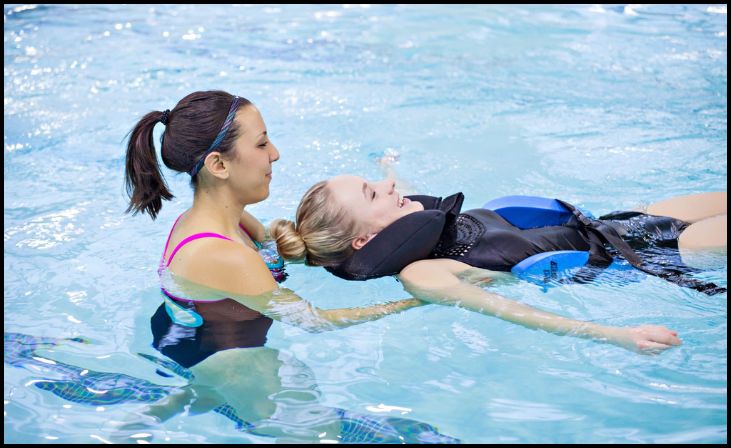
Aquatic therapy, or hydrotherapy, involves performing physical therapy exercises in a pool or other aquatic environment. The buoyancy of water supports the body, reducing the stress on joints and muscles, making it an excellent option for post-surgery recovery. This therapy is particularly beneficial for patients who have difficulty performing exercises on land due to pain or limited mobility.
The resistance of water also provides a gentle way to strengthen muscles and improve cardiovascular fitness. Aquatic therapy can help in reducing swelling, improving circulation, and enhancing overall joint flexibility. Sessions are typically guided by a physical therapist who ensures that the exercises are performed correctly and safely, maximizing the therapeutic benefits of the water environment.
Cryotherapy
Cryotherapy, or cold therapy, is a technique used to reduce inflammation, pain, and swelling following surgery. This method involves applying cold packs or using ice baths to the affected area. Cryotherapy works by constricting blood vessels, which helps to reduce blood flow and, consequently, inflammation and swelling. It also numbs the sore area, providing temporary pain relief.
This therapy is particularly useful in the initial stages of recovery when swelling and pain are most pronounced. Physical therapists often incorporate cryotherapy into a comprehensive treatment plan, using it in conjunction with other techniques such as manual therapy and therapeutic exercises to enhance recovery outcomes.
Heat Therapy
Heat therapy, also known as thermotherapy, involves applying heat to the affected area to reduce pain and improve blood flow. This method is beneficial for relaxing muscles, reducing joint stiffness, and alleviating pain. Heat therapy can be administered through various means, including hot packs, warm baths, and heating pads.
The increased blood flow resulting from heat application helps to deliver essential nutrients and oxygen to the damaged tissues, promoting faster healing. Heat therapy is particularly effective for patients dealing with chronic pain or stiffness post-surgery. It is often used in combination with other therapies to provide comprehensive care and enhance overall recovery.
Laser Therapy
Laser therapy is an advanced physical therapy technique that uses focused light to penetrate deep into tissues, promoting cellular repair and reducing pain and inflammation. This non-invasive treatment is particularly effective for healing soft tissue injuries and reducing post-surgical pain. The laser stimulates cellular activity, increasing the production of ATP (adenosine triphosphate), which speeds up the healing process.
It also helps in reducing scar tissue formation and improving circulation. Sessions of laser therapy are usually painless and last between five and ten minutes. This therapy can be a valuable addition to a post-surgery recovery plan, enhancing the overall healing process and improving patient outcomes.
Kinesiology Taping
Kinesiology taping is a therapeutic technique involving the application of a special elastic tape to support muscles and joints without restricting movement. This technique helps in reducing pain, swelling, and muscle spasms while improving circulation and healing. The tape lifts the skin slightly, creating space between the skin and the tissues underneath, which helps to reduce pressure and improve blood flow to the affected area.
Kinesiology taping can be particularly beneficial for stabilizing joints, improving posture, and providing support during physical activities. Kinesiology taping can be particularly beneficial for stabilizing joints, improving posture, and providing support during physical activities. It is often used in conjunction with other physical therapy techniques to enhance recovery and prevent further injury.
Joint Mobilization

Joint mobilization is a manual therapy technique aimed at improving joint function and range of motion. This technique involves the physical therapist using their hands to apply gentle, controlled movements to the joints. Restoring normal function, lowering pain, and increasing mobility are the objectives. Joint mobilization is particularly beneficial for patients who experience stiffness and restricted movement after surgery.
It helps in breaking down adhesions and scar tissue, improving synovial fluid production, and enhancing overall joint health. Regular joint mobilization sessions can lead to significant improvements in flexibility and function, aiding in a faster and more effective recovery.
Also Read: 10 Best Physical therapy stretches for increase flexibility
Conclusion
Post-surgery recovery can be a complex process, but incorporating these 10 physical therapy techniques can greatly enhance your rehabilitation journey. Each technique offers unique benefits, tailored to address specific aspects of recovery, from pain management to restoring mobility. By working closely with a skilled physical therapist, you can develop a personalized recovery plan that ensures a smoother and more effective healing process. Remember, the key to successful recovery lies in consistency, patience, and dedication to your therapy regimen.
FAQs
How soon should I begin physical therapy following surgery?
The timing for starting physical therapy varies based on the type of surgery and your surgeon’s recommendations, but it typically begins within a few days to a week post-surgery to optimize recovery.
Are all physical therapy techniques suitable for every type of surgery?
No, not all techniques are suitable for every type of surgery. Your physical therapist will tailor the techniques to your specific surgery and recovery needs to ensure the best outcomes.

